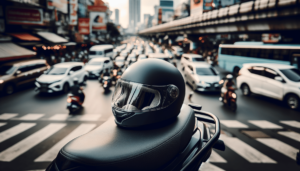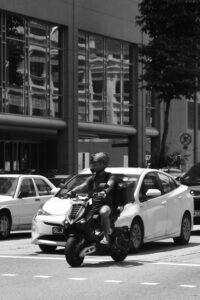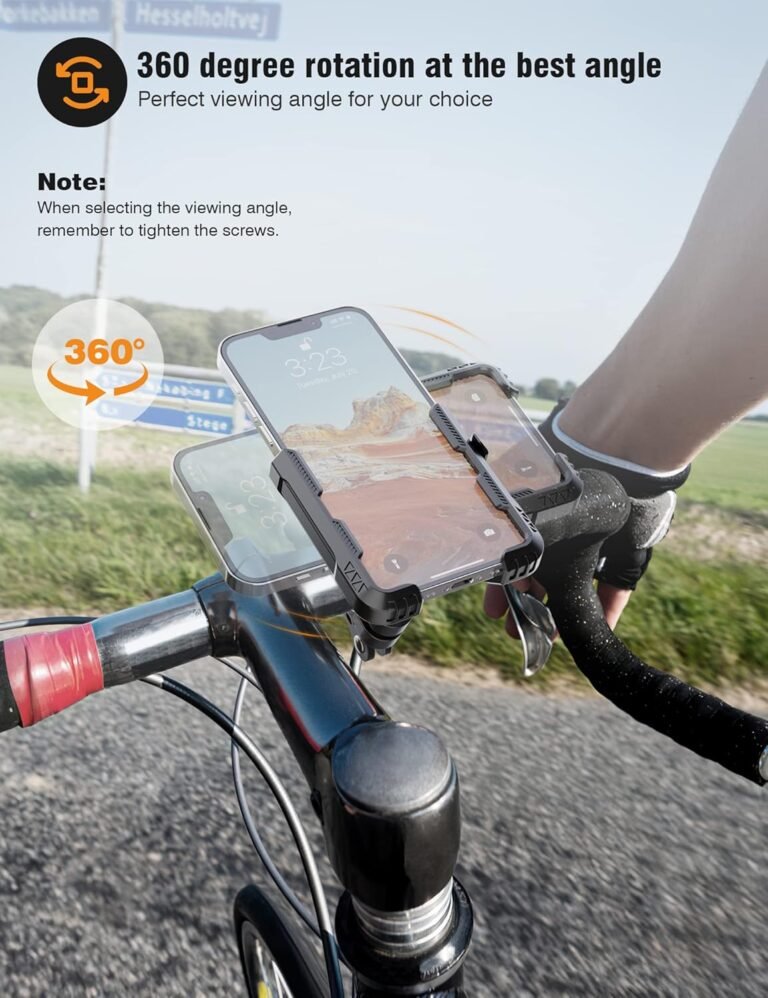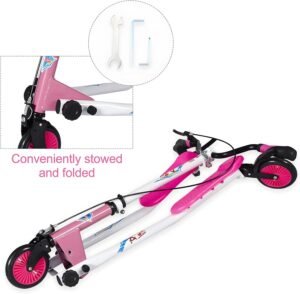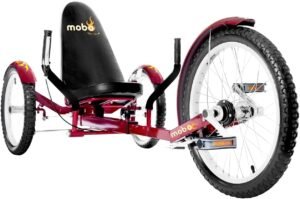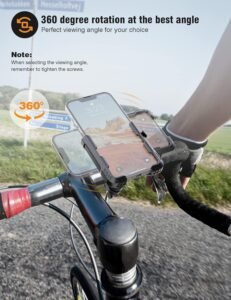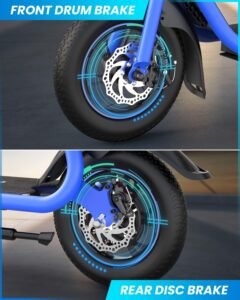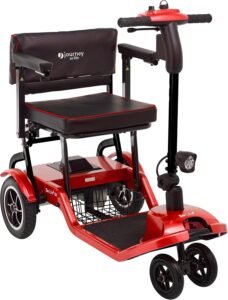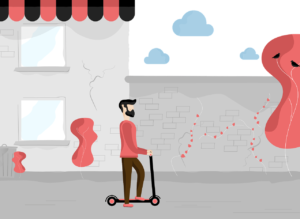
Whether you’re a seasoned scooter rider or just starting out, it’s important to prioritize safety on the roads. In this concise and informative article, you will discover a comprehensive set of essential safety instructions that every scooter rider should know. From wearing protective gear to maintaining proper balance and awareness, these guidelines will help ensure a smooth and secure ride. So, hop on board and let’s explore the world of scooter riding safety together!

This image is property of pixabay.com.
Check out our product reviews!
Wear the Right Protective Gear
Helmet
When it comes to riding a scooter, safety should always be your top priority. One of the most crucial pieces of protective gear you should wear is a helmet. A helmet can greatly reduce the risk of head injuries in case of a fall or accident. Make sure to choose a helmet that fits properly and meets safety standards. It should cover your entire head and have a chin strap to keep it securely in place. Remember, wearing a helmet can potentially save your life, so don’t skip this essential safety precaution.
Knee pads and elbow pads
In addition to a helmet, it’s highly recommended to wear knee pads and elbow pads while riding a scooter. These protective gears provide an extra layer of cushioning and help protect these vulnerable areas of your body from abrasions and injuries in case of a fall. Look for knee and elbow pads that are made from durable materials and provide a snug yet comfortable fit. Remember, even if you’re a skilled rider, accidents can happen, so it’s always better to be safe than sorry.
Closed-toe shoes
When riding a scooter, it’s essential to wear closed-toe shoes that cover and protect your feet. Avoid wearing sandals, flip flops, or any other open-toe footwear, as they don’t provide adequate protection in case of a mishap. Closed-toe shoes, such as sneakers or sturdy athletic shoes, offer better grip and stability, reducing the risk of slipping off the scooter’s platform. Proper footwear not only protects your feet from potential injuries but also enhances your control and balance while riding.
Reflective gear
Visibility is key to staying safe while riding a scooter, especially during low light conditions or when sharing the road with vehicles. Wearing reflective gear, such as a reflective vest or reflective bands, greatly enhances your visibility to other road users, making it easier for them to see you. These reflective accessories work by reflecting light back towards its source, making you more noticeable. Incorporating reflective gear into your riding attire is a simple yet effective way to maximize your safety on the road.
Inspect Your Scooter Before Riding
Check the tires
Before setting off on your scooter, take a few moments to inspect the tires. Ensure they are properly inflated and free from any cuts, bulges, or other signs of damage. Riding on underinflated or damaged tires can greatly impact your control and stability, increasing the risk of accidents. If necessary, use a pump to inflate the tires to the manufacturer’s recommended pressure. Regularly checking and maintaining proper tire condition will not only improve your riding experience but also keep you safe on the road.
Test the brakes
Properly functioning brakes are essential for safe scooter riding. Before you start your ride, test both the front and rear brakes to ensure they are in good working order. Squeeze the brake levers and make sure they provide sufficient stopping power without any unusual noises or resistance. If you notice any issues with the brakes, such as excessive wear or ineffective braking, it’s crucial to have them repaired or replaced by a qualified technician before riding. Remember, functional brakes are your first line of defense in avoiding accidents or collisions.
Ensure the handlebars are secure
The handlebars are a critical component of your scooter, and it’s important to ensure they are securely attached before riding. Give them a gentle tug to check if they are loose or wobbly. If you notice any instability or movement, it’s essential to tighten the handlebar clamp or bolts as per the manufacturer’s instructions. Riding with loose or unstable handlebars can significantly affect your control and increase the risk of accidents. Taking a few moments to check the handlebars’ stability can make a big difference in your overall riding experience.
Check for any loose parts
Before hopping on your scooter, carefully inspect it for any loose parts or components. Check that all screws, bolts, and nuts are properly tightened and secured. Pay attention to the scooter’s frame, deck, stem, and any other areas that could potentially loosen due to regular use or vibrations. If you come across any loose parts, tighten them immediately or seek professional assistance if needed. Riding with loose components can compromise the scooter’s stability and increase the chances of accidents or malfunctions.

This image is property of pixabay.com.
Check out our product reviews!
Choose Safe Riding Locations
Sidewalks and bike lanes
When selecting a riding location, opt for sidewalks and designated bike lanes whenever possible. These areas are specifically designated for pedestrians and cyclists, offering a safer environment for scooter riders as well. Be respectful of other path users, yield to pedestrians, and maintain a reasonable speed to ensure everyone’s safety. Remember to follow any local regulations or restrictions regarding scooter use on sidewalks or bike lanes.
Avoid busy traffic areas
To minimize your risk of accidents, it’s best to avoid busy traffic areas when riding a scooter. Heavy traffic can be overwhelming and increases the chances of collisions or close calls. Choose routes that have lighter traffic flow, quieter streets, or alternative paths such as parks or residential areas. Not only will this provide a more enjoyable riding experience, but it will also reduce the potential dangers associated with navigating through congested traffic.
Be cautious on uneven surfaces
Uneven surfaces can pose a challenge for scooter riders, as they can lead to loss of control or accidents. Exercise caution when traversing over rough or uneven terrain, such as cobblestones, gravel, or potholes. Slow down, maintain a firm grip on the handlebars, and be prepared for sudden changes in the surface. Taking your time and being mindful of your surroundings will help you navigate these obstacles with ease and decrease the risk of falls or injuries.
Avoid steep hills
Scooters may not be designed to handle steep inclines, and attempting to ride up or down a steep hill can be dangerous. Steep hills can cause the scooter to accelerate uncontrollably or lose stability, making it difficult to maintain balance or stop safely. If you encounter a steep hill during your ride, it’s best to dismount and walk your scooter until you reach a flatter, safer area. Prioritizing your safety by avoiding steep hills will ensure a smooth and worry-free riding experience.
Be Aware of Surroundings
Scan for pedestrians and vehicles
Maintaining awareness of your surroundings is crucial for scooter riders. Scan the area ahead and around you for any pedestrians, vehicles, or other potential hazards that may come into your path. By continuously scanning and anticipating the movements of others, you can adjust your speed and direction to avoid conflicts or collisions. Being attentive and observant allows you to react quickly and effectively, keeping yourself and others safe while on the road.
Anticipate potential hazards
Being proactive in identifying potential hazards is an essential part of safe scooter riding. Train yourself to anticipate situations that might pose a risk, such as cars pulling out of driveways, pedestrians suddenly crossing the street, or obstacles in your path. By developing good hazard perception skills, you can preemptively adjust your riding style and take appropriate actions to minimize the chances of accidents or incidents. Remember, a little anticipation can go a long way in keeping you out of harm’s way.
Use mirrors to check for incoming traffic
Equipping your scooter with mirrors can greatly enhance your safety on the road. Mirrors provide you with a rearward view, allowing you to see approaching vehicles or cyclists without having to turn your head. Adjust the mirrors to provide a clear view of the traffic behind you, ensuring you have enough time and space to react to any potential dangers. Regularly check your mirrors while riding, especially before changing lanes or making turns, to maintain a comprehensive awareness of your surroundings.
Avoid distractions
Distractions can significantly affect your ability to ride a scooter safely. While riding, it’s vital to stay focused and avoid any distractions that can divert your attention from the road. Put away your phone, refrain from listening to loud music through headphones, and resist the urge to engage in activities that take your eyes or mind off the task at hand. By remaining alert and focused, you can react swiftly to any sudden changes in the environment and stay in control of your scooter.

This image is property of pixabay.com.
Follow Traffic Rules and Signals
Obey traffic lights
As a scooter rider, it’s important to follow traffic lights and signals, just like any other road user. Obey red lights by coming to a complete stop and proceed only when the light turns green. Pay attention to pedestrian crosswalk signals and yield the right of way to pedestrians when the signal indicates. Traffic lights are designed to regulate the flow of traffic and ensure safety for all road users, so it’s essential to adhere to these signals to prevent accidents or conflicts.
Stop at stop signs
Stop signs indicate that you must come to a complete stop before proceeding. Always stop at stop signs and yield the right of way to other vehicles or pedestrians as required. Treat stop signs as if they were red lights, and only proceed when it is safe and it is your turn to do so. By respecting stop signs and practicing good traffic etiquette, you can contribute to a safer and more harmonious flow of traffic.
Yield to pedestrians
As a responsible scooter rider, it is vital to yield to pedestrians and give them the right of way. This means slowing down or stopping to allow pedestrians to cross the road or use designated crosswalks. Always be attentive and make sure pedestrians have safely made it across before proceeding. By showing respect and consideration to pedestrians, you can promote a culture of safety and foster positive interactions between scooter riders and pedestrians.
Use hand signals for turning
Signaling your intentions is essential for communicating with other road users and ensuring a smooth and predictable flow of traffic. When turning on your scooter, use appropriate hand signals to indicate your intent. Extend your left arm straight out to indicate a left turn and bent left arm pointing upward to signal a right turn. By using hand signals, you provide clear indications of your intended actions, allowing other road users to anticipate your movements and adjust accordingly.
Maintain Proper Scooter Control
Hold the handlebars firmly
Proper hand positioning and a firm grip on the handlebars are essential for maintaining control over your scooter. Keep both hands on the handlebars at all times and avoid riding with just one hand, as it reduces your ability to react quickly in case of sudden maneuvers or hazards. Position your hands comfortably on the handlebars, ensuring you have a stable and secure grip. By maintaining proper hand positioning and a firm hold, you can navigate your scooter with confidence and precision.
Keep both feet on the scooter
To ensure stability and control, it’s important to keep both feet on the scooter’s deck while riding. Placing one foot off the scooter or attempting to ride with both feet on one side can throw off your balance and increase the chances of a fall or collision. Keep your feet planted on the deck, with your weight evenly distributed, allowing you to maintain stability and maneuver efficiently. By keeping both feet on the scooter, you can better respond to any unexpected obstacles or changes in terrain.
Avoid sudden maneuvers
Smooth, controlled movements are key to maintaining optimal scooter control. Avoid making sudden and erratic maneuvers as they can compromise your stability and increase the risk of accidents. Gradually accelerate and decelerate, and always anticipate turns or changes in direction to adjust your speed and position in a controlled manner. Predictable movements allow yourself and other road users to maneuver safely and avoid potential conflicts.
Maintain a safe speed
Keeping an appropriate speed is critical for ensuring your safety and the safety of others around you. Scooter riders should adapt their speed based on the riding conditions, the environment, and the presence of other road users. Avoid excessive speed, as it can impair your ability to react to hazards and reduce your control over the scooter. Similarly, riding too slowly can impede the flow of traffic, leading to potentially dangerous situations. Find a balance and maintain a safe speed that allows for proper control, reaction times, and adherence to traffic rules.
Use Lights and Reflectors
Use front and rear lights
Using lights on your scooter is crucial, especially when riding during low light conditions or at night. Both a front light and a rear light help improve your visibility to other road users, making you more easily identifiable. The front light illuminates your path ahead, allowing you to see any potential hazards, while the rear light makes you more visible to vehicles approaching from behind. Make sure to regularly check the functionality of the lights and replace batteries or bulbs as needed to ensure maximum effectiveness.
Attach reflectors to the scooter
In addition to lights, attaching reflectors to your scooter is an effective way to increase your visibility, particularly during low light situations. Reflectors reflect light back towards its source, making you more noticeable to other road users. Place reflectors in strategic locations on your scooter, such as the front, sides, and rear, to maximize visibility from various angles. When light from headlights or streetlights hits the reflectors, it bounces back, alerting others to your presence.
Increase visibility in low light conditions
Riding in low light conditions, such as dusk or dawn, poses added risks due to reduced visibility. To enhance your safety during these times, consider wearing bright or reflective clothing that stands out in low light. This can include reflective vests, jackets, or accessories that increase your visibility to drivers and other road users. By making yourself more noticeable, you decrease the likelihood of accidents or dangerous situations arising from reduced visibility.
Be visible to other road users
Visibility is crucial when sharing the roads with other vehicles, especially when riding a scooter. Make a conscious effort to be visible to drivers by positioning yourself appropriately on the road, especially at intersections or when preparing to make turns. Make eye contact with drivers whenever possible to ensure they see you and understand your intentions. Being visible and actively engaging with other road users is a proactive safety measure that greatly reduces the risk of accidents or collisions.
Ride Defensively
Assume others may not see you
When riding a scooter, it’s important to adopt a defensive mindset and assume that other road users may not see you. Many drivers may not be accustomed to sharing the road with scooters, and some may not be actively looking out for them. Stay vigilant, anticipate the possibility of drivers not noticing you, and take extra precautions to ensure your safety. By adopting a defensive approach, you position yourself to react swiftly and effectively, mitigating potential risks.
Stay out of blind spots
Avoid riding in the blind spots of larger vehicles, such as cars, trucks, or buses. These are areas where the drivers’ visibility is limited, making it more likely for them not to perceive your presence. Position yourself where you can be easily seen by other road users, ensuring you have adequate space and time to react to any unexpected actions. While it may be tempting to ride alongside vehicles, it’s safer to ensure you are always within their line of vision.
Be prepared to react to unpredictable situations
Even with meticulous planning and cautious riding, unpredictable situations can arise on the road. Stay mentally prepared to react quickly and effectively when faced with unexpected obstacles or behavior from other road users. Keep your focus on the road ahead, maintain a safe distance from other vehicles, and always be ready to take evasive action if necessary. By staying alert and prepared, you empower yourself to address and navigate through unexpected situations while keeping yourself safe.
Maintain a safe distance from other vehicles
Maintaining a safe distance from other vehicles is fundamental to scooter riding safety. A sufficient following distance provides you with the necessary reaction time in case the vehicle in front suddenly stops or changes direction. As a general rule, try to maintain at least a two-second gap between your scooter and the vehicle in front. This allows you ample time to brake or maneuver safely. Remember, maintaining a safe distance is crucial for minimizing the risk of collisions or rear-end accidents.
Communicate Intentions
Use hand signals to indicate turns
Communicating your intentions to other road users is essential for maintaining a safe riding environment. When turning, using appropriate hand signals alerts drivers and pedestrians of your intended actions, allowing them to anticipate your movements. Raise your left arm straight out to signal a left turn and bend your left arm upwards to signal a right turn. By using hand signals, you contribute to better communication on the road, reducing confusion and increasing safety for all.
Make eye contact with drivers and pedestrians
Establishing eye contact with drivers and pedestrians helps ensure that they have seen you and are aware of your presence. When entering an intersection or crossing a road, make a conscious effort to make eye contact with drivers, especially if you are unsure of their intentions. This mutual acknowledgment ensures that both parties are aware of each other and can safely proceed. While eye contact is not always possible, it is an effective means of communication when sharing the road.
Use audible signals when necessary
In certain situations, using audible signals can be an effective way to communicate your presence to other road users. When riding in an area with heavy foot traffic or approaching blind corners, it may be necessary to use a bell or horn to alert pedestrians or other cyclists to your presence. Pay attention to local regulations regarding the use of audible signals and use them sparingly and respectfully. Audible signals should be used as a safety measure, ensuring that others are aware of your presence and can move accordingly.
Signal in advance before changing lanes
Signaling your intention to change lanes is a critical aspect of safe scooter riding. Make sure to provide sufficient advance notice by using hand signals, allowing other road users to anticipate your movement. Check your surroundings, including your mirrors, to ensure it is safe to change lanes. Once you have signaled your intention, proceed smoothly and efficiently, maintaining control, and watching for any potential hazards. Clear and timely signaling promotes communication and understanding among road users, reducing the likelihood of accidents.
Practice Proper Scooter Etiquette
Share the path with pedestrians
When riding your scooter in areas where pedestrians are present, it’s important to share the path or sidewalk responsibly. Be considerate and respectful of pedestrians by maintaining a reasonable speed and giving them ample space. Slow down or dismount when in crowded areas to ensure everyone’s safety. Always yield the right of way to pedestrians, especially those with mobility challenges or young children. By practicing proper etiquette, you create a harmonious and safe environment for all path users.
Yield to pedestrians in crowded areas
In crowded areas, such as busy sidewalks or popular pedestrian zones, it is crucial to yield to pedestrians whenever necessary. Exercise patience, slow down, and adapt your speed to the flow of foot traffic. Be mindful of pedestrians’ right of way and avoid weaving in and out of crowded areas, as this can create instability and increase the risk of accidents. By yielding and showing respect to pedestrians, you contribute to a safer and more enjoyable experience for everyone.
Do not ride on crowded sidewalks
While it can be tempting to ride on crowded sidewalks to avoid traffic, doing so can put pedestrians and yourself at risk. Scooters can travel at higher speeds than pedestrians, making it difficult to navigate safely in crowded areas. Instead, choose alternative routes, such as bike lanes or less congested streets that allow for smoother and more predictable riding. When sidewalks are busy, it’s best to dismount and walk your scooter until you reach a less crowded area.
Park scooters in designated areas
When you’ve reached your destination, it’s essential to park your scooter responsibly and considerately. Look for designated scooter parking areas or other designated spaces where scooters are permitted. Avoid obstructing sidewalks, ramps, or entrances, as this can create hazards for pedestrians or others with mobility challenges. By parking responsibly, you help maintain a clutter-free and accessible environment, while also promoting a positive image of scooter riders in the community.
In conclusion, riding a scooter can be an enjoyable and convenient mode of transportation, but safety should always come first. By wearing the right protective gear, inspecting your scooter before riding, choosing safe riding locations, being aware of your surroundings, following traffic rules, maintaining proper control, using lights and reflectors, riding defensively, communicating your intentions, and practicing proper scooter etiquette, you can have a safe and enjoyable experien
